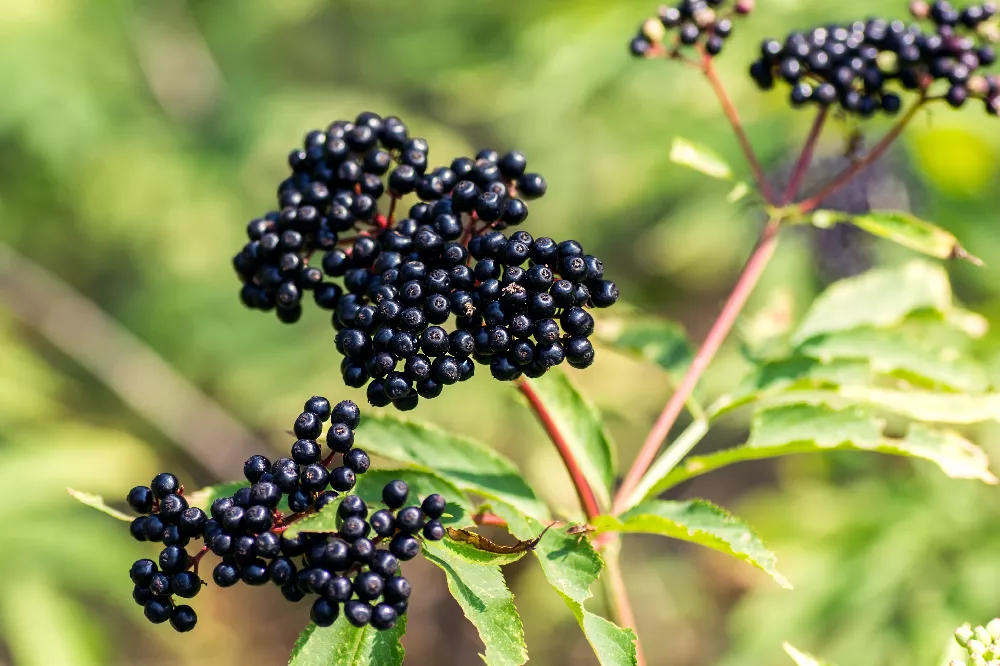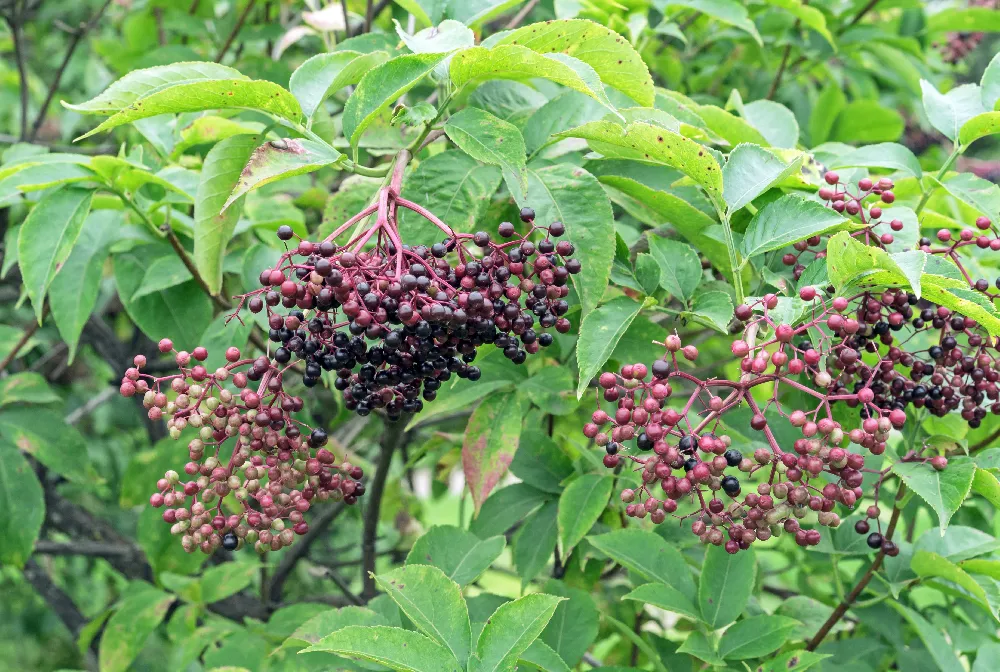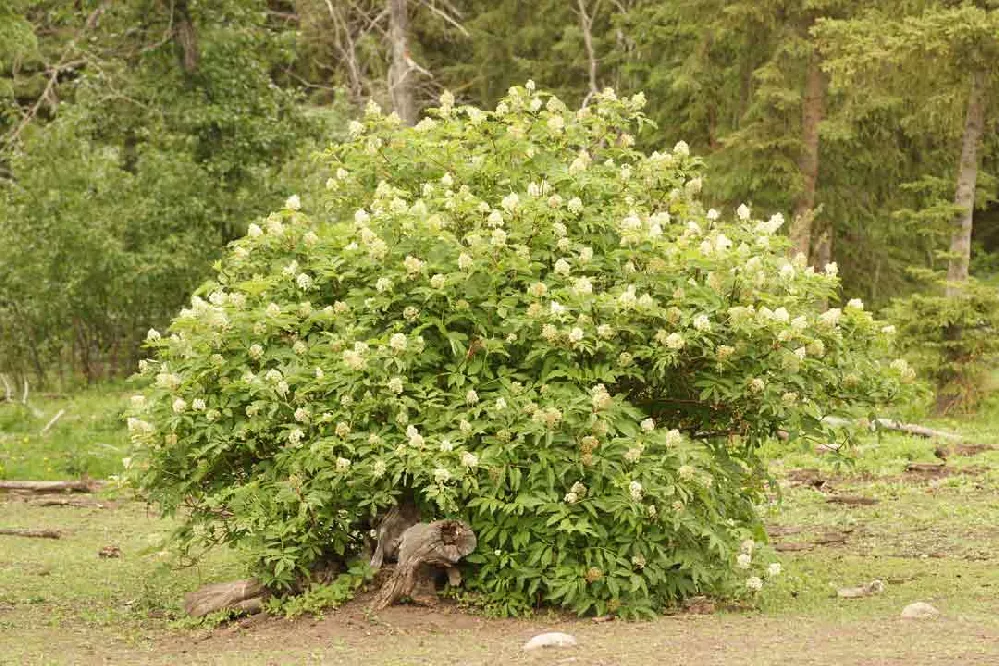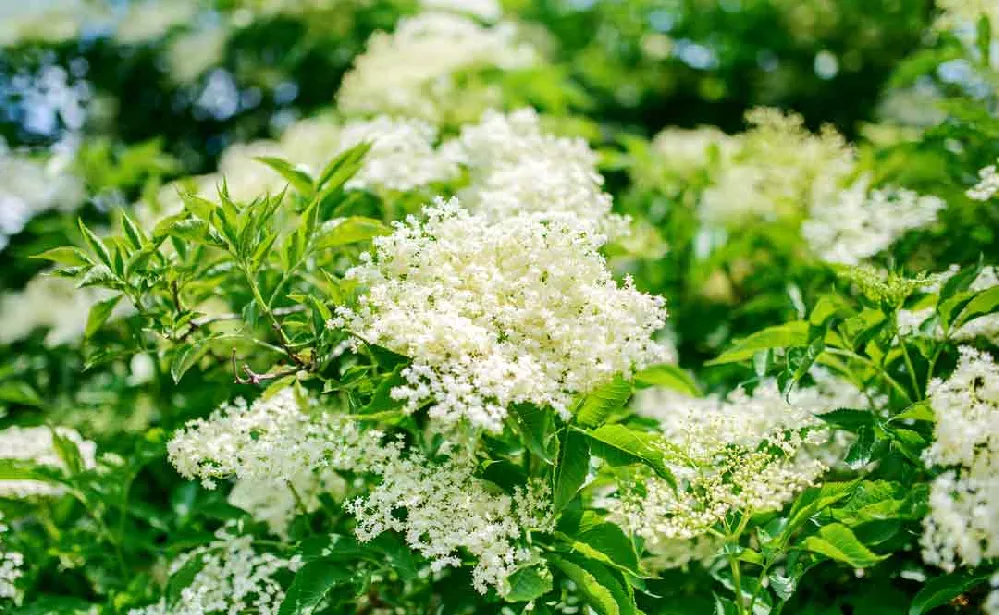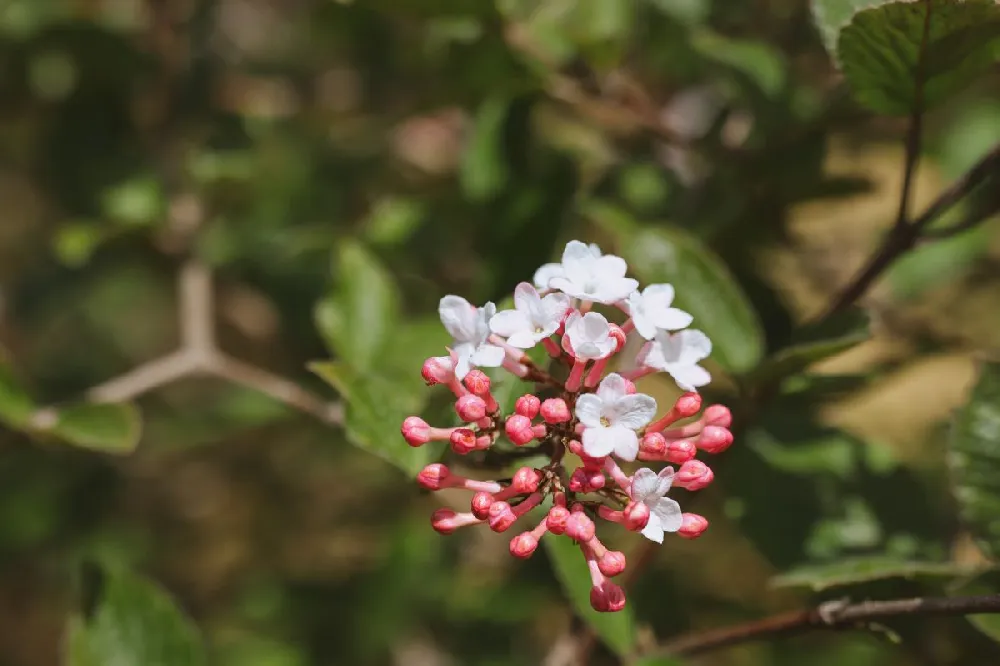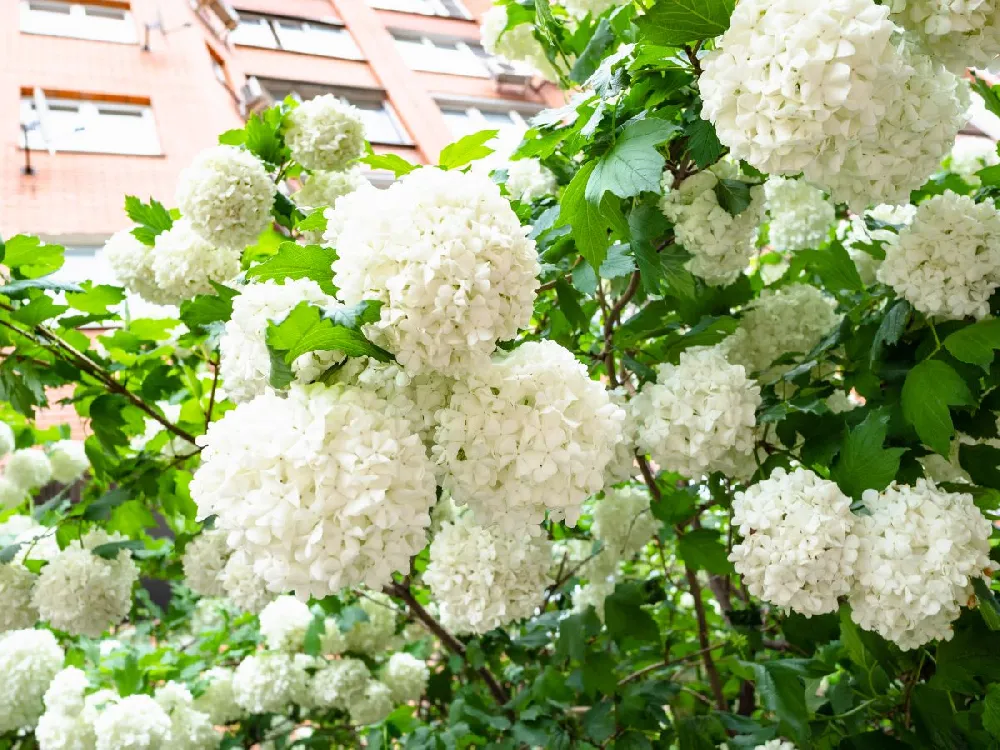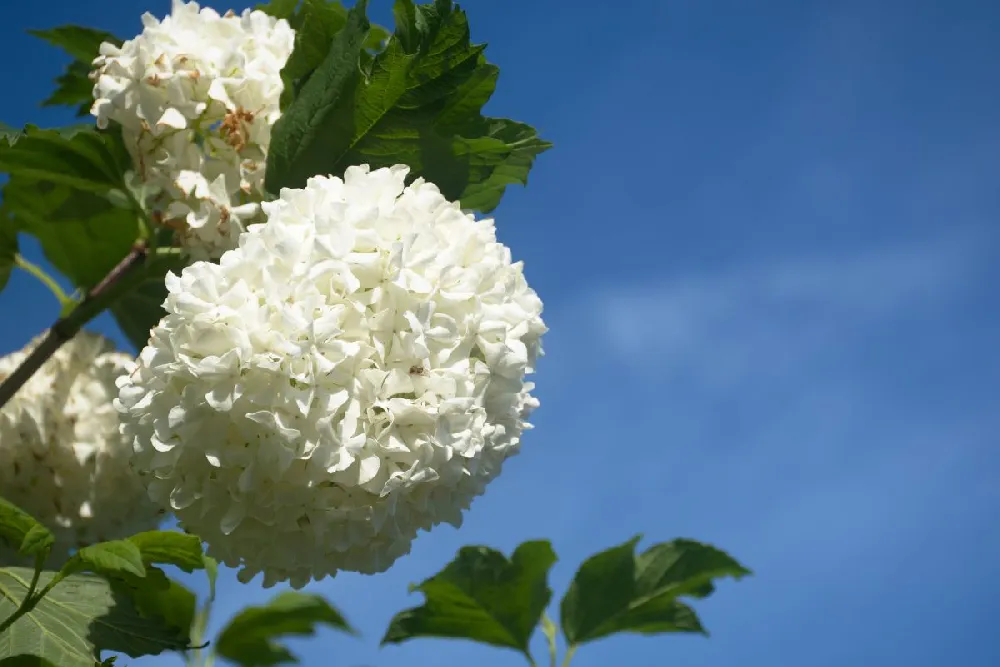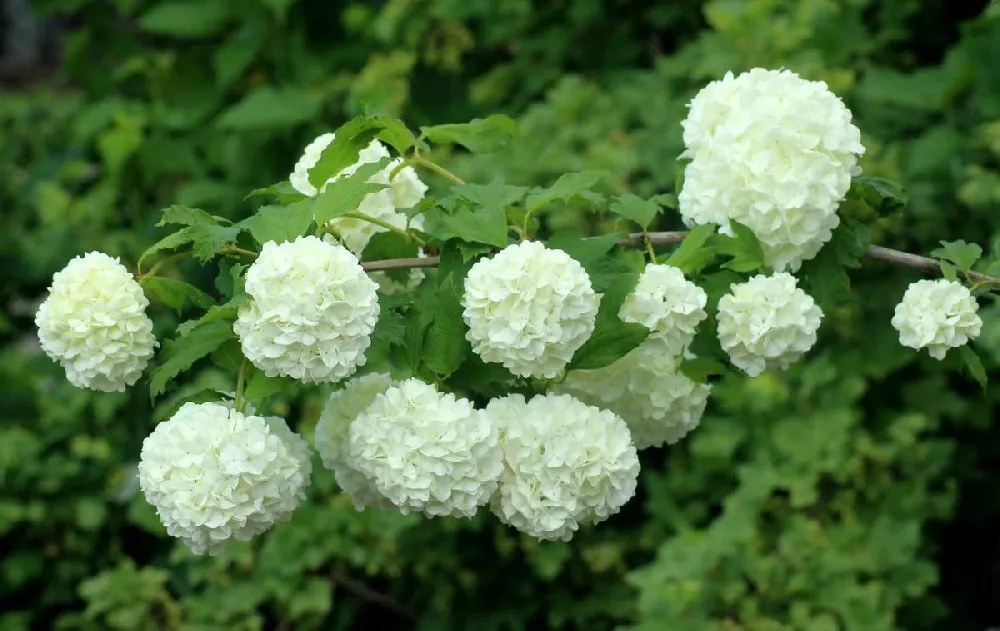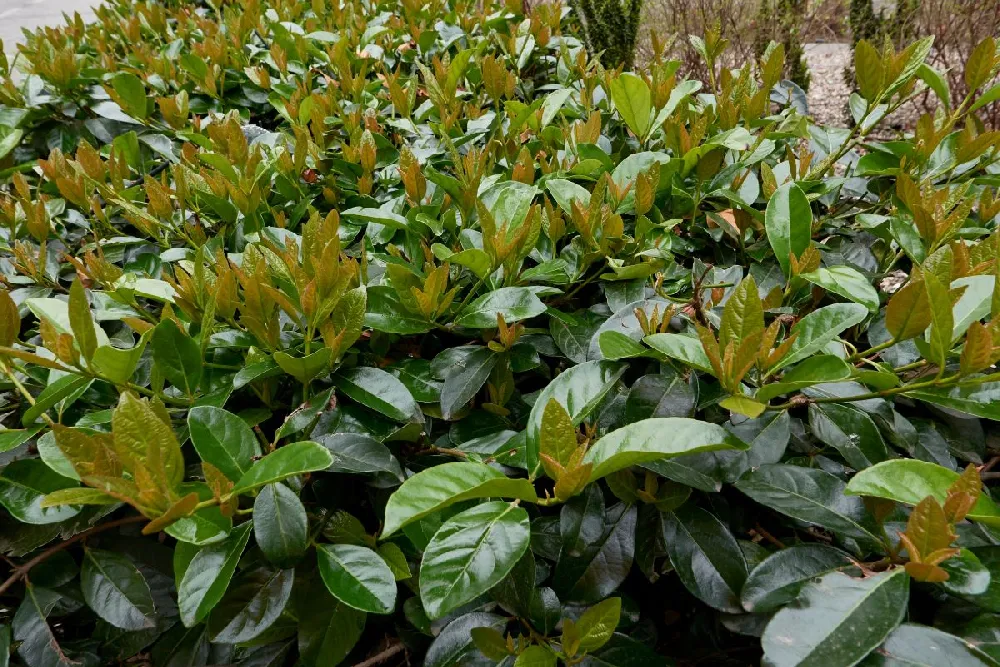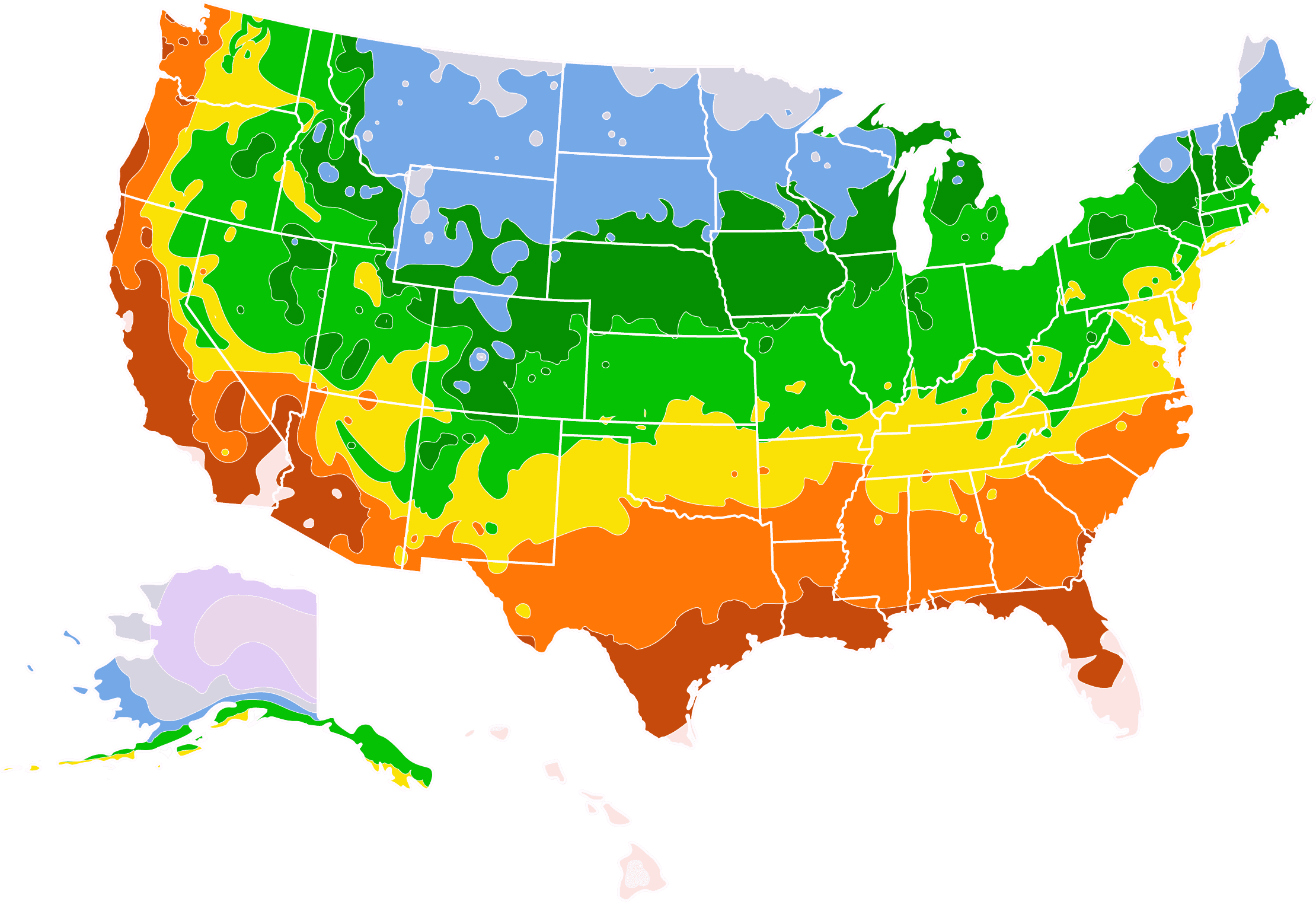- Home >
- Edible Plants >
- Elderberry Plants
‘Johns’ and ‘Adams’ Elderberry Shrub Pairs for Sale - Buying & Growing Guide
Sambucus canadensis (family: Adoxaceae) is an elderberry species commonly referred to as the American black elderberry, or the common elderberry. The species is native to eastern North America. Two varieties of S. canadensis, ‘Johns’ and ‘Adams,’ make an excellent pair when planted together. They both produce large dark-purple fruits, yet they ripen a few weeks apart from each other.
- Elderberry shrubs have attractive flowers and make a nice addition to the garden landscape.
- Produces fruit in the first or second year.
- Elderberries can be processed into jam, wine, and other goods.
Enter your zip code to find nearby stores that may carry this plant.
Plant Care
Sunlight

Full sunlight is generally best for this plant.
Watering
Maintain a consistent level of soil moisture. Don't allow more than the first few inches of soil to become dry.
Fertilizing

Fertilize in early spring with a mix that has an equal amount of nitrogen, phosphorus, and potassium.
Planting and Care
Planting instructions
‘Johns’ and ‘Adams’ elderberry shrubs perform well in USDA hardiness zones 4 to 9. Choose a planting site with full sun and rich soil. Once you have found your site, dig a hole as deep as the root ball and about three times as wide. Place the shrub into the hole and backfill with dirt. Water thoroughly, and apply a light layer of mulch. You will want to plant your pair of bushes near each other to enhance pollination and fruit production.
Watering and nutrients
Keep your transplants watered well for the first few weeks. Once the plants are established, you can reduce watering to a few times per week. Mature ‘Johns’ and ‘Adams’ elderberry shrubs prefer moist soil, so be sure to check that the soil is never dry past the first few inches. In nature, these bushes are often found growing alongside ponds and streams, so it is difficult to overwater them. They also perform well in dry, poor soil with the addition of a two to three inch layer of mulch and an application of compost.
Pollination
While elderberry shrubs are considered self fertile, they will produce more fruit when grown alongside another variety. Buying a pair of bushes, such as the ‘Johns’ and ‘Adams,’ makes it easy to ensure that you will have a large crop of elderberries. Plant the pair within 50 feet of each other for the best results. The species is primarily pollinated through wind dispersion, but the flowers will also attract insects, like butterflies and bees.
Pruning
Pruning is not necessary for elderberry bushes, but it will help the overall health and appearance of your plants. For the first few years, let your bushes grow as they please, only removing dead or dying branches. After three or four years, you can start pruning off the oldest canes. Clearing out old growth will make room for newer canes that will put off higher quantities of fruit.
Pests, diseases, and animals
Elderberry shrubs are susceptible to a few fungal diseases. Cankers are commonly found on the trunk or branches of a bush, showing up as a deformation on the branch and causing leaves to wilt or die. Prune away these infected branches and burn them to prevent the fungus from returning. Powdery mildew is also prevalent in the species, usually caused by excessively moist conditions. Defend against this fungus by pruning your elderberry bushes to promote airflow and proper sunlight. Birds, deer, and other animals are attracted to elderberries and may attempt to steal your crop.
Harvesting
Elderberry flowers show up in the spring, followed by the prized berries in late summer. The ‘Johns’ and ‘Adams’ pair will ripen approximately two weeks apart, with the Adams berries showing up first, around the month of August. Ripe berries are fully transformed from green to purple. A cluster of ripe berries will be found sagging under the weight of the fruit. Elderberry bushes may produce fruit in the first or second year, but the amount of berries will increase immensely around the third year.
FAQs
How big do elderberry bushes grow?
Do elderberry bushes spread?
Elderberry bushes do spread and are even considered invasive in some areas. They propagate through suckers, which are new growths that emerge from the roots of a plant. If left alone, new elderberry plants will continue to form around the original, creating a natural hedge in the process. This can be desirable in some situations, but most home gardeners remove the suckers as they appear to prevent them from taking over the area.
Can you eat raw elderberries?
Elderberries are often feared for their toxicity, and it is not recommended to eat the raw fruit. The unripe fruits contain a notable amount of cyanogenic glycosides, a compound that is poisonous to humans and most animals. The twigs, leaves, and other parts of the plant are also toxic. Cooking down elderberries is the safest way to consume them. This has led to their wide use in jams, wines, and other processed goods that break down any potential poisons in the fruit.
What grows well with elderberries?
Because of the elderberry’s ability to grow in most American climates, the options for companion planting are nearly endless. Try planting other sun-loving berry shrubs near your elderberries — blueberries, winterberries, and currants are all good choices. Alternatively, you can add a few additional cultivars of elderberry, such as Sambucus nigra ‘Black Lack’, to enjoy an even greater variety of fruiting times and flavors. Avoid planting too close to shady trees, as this will prevent ‘Johns’ and ‘Adams’ elderberries from reaching their full potential.
